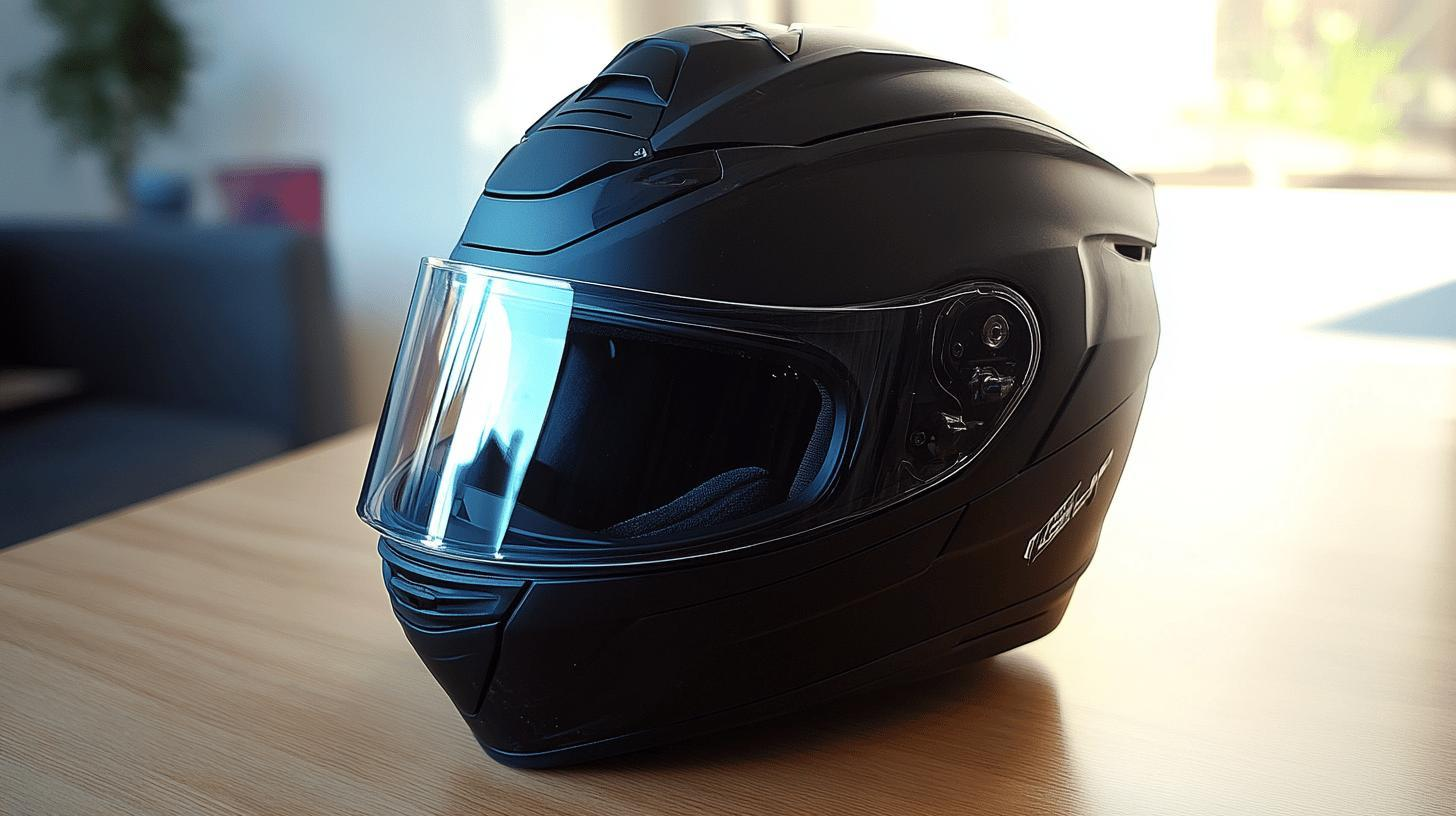Is your helmet truly protecting you, or could your safety gear be smarter? Enter MIPS—Multi-directional Impact Protection System—a revolutionary shift in helmet safety.
By significantly reducing rotational motion trauma during impacts, MIPS helmets offer an advanced layer of defense compared to traditional models. As motorcycle enthusiasts seek out the best gear, understanding this technology could make all the difference in your riding experience.
This blog dives into what makes MIPS a game-changer in helmet design, how it functions, and why it's considered a critical advancement in rider protection.
Understanding MIPS Technology in Motorcycle Helmets

MIPS, or Multi-directional Impact Protection System, represents a pivotal advancement in helmet safety technology. Developed to mitigate the risk of rotational motion trauma, MIPS allows a helmet to move slightly relative to the head during an impact.
This innovation targets the reduction of rotational forces, which are often responsible for significant brain injuries during accidents. By addressing these specific forces, MIPS enhances the protective capabilities of motorcycle helmets, offering riders greater safety.
The integration of MIPS technology into helmet designs involves a unique approach. A low-friction layer is inserted between the helmet's outer shell and the head. This layer permits the helmet shell to move independently from the head by about 10 to 15 millimeters in any direction when an impact occurs.
This movement is crucial during the first few milliseconds of an impact, where rotational forces are most intense. The design process requires this technology to be included from the outset, as it cannot be retrofitted into existing helmets.
Manufacturers incorporate the MIPS layer during the production of the helmet, ensuring seamless integration with the helmet’s structural components.
-
Reduces rotational forces that are common in real-world impacts.
-
Offers additional protection beyond traditional helmet designs.
-
Enhances safety by mimicking the brain's natural cushioning system.
-
Provides peace of mind with a tested safety feature in diverse conditions.
-
Encourages innovation and improvements in helmet manufacturing.
MIPS technology is considered a significant advancement in helmet safety due to its ability to address a critical aspect of impact dynamics that traditional helmets often overlook.
By focusing on reducing the rotational forces, MIPS helmets provide an added layer of protection that is crucial for preventing brain injuries. This technology not only enhances the overall safety of helmets but also sets a new standard for future innovations in protective headgear.
How MIPS Helmets Compare to Traditional Helmets

Traditional motorcycle helmets are primarily designed to protect against direct impacts. This design approach focuses on dissipating the energy from a straightforward collision, often using materials like expanded polystyrene (EPS) to absorb the shock.
However, this focus on direct impacts means traditional helmets may not adequately address rotational forces, which occur when the head is subjected to an angular motion during an accident. These forces can lead to significant brain injuries, as the brain twists inside the skull.
| Feature | MIPS Helmets | Traditional Helmets |
|---|---|---|
| Design Focus | Reduces rotational forces | Primarily direct impact absorption |
| Safety Mechanism | Low-friction layer allows slight movement | EPS material for energy absorption |
| Cost | Generally higher due to advanced technology | Typically lower, basic impact protection |
MIPS helmets introduce an innovation in helmet safety by integrating a Multi-directional Impact Protection System. This system consists of a low-friction layer that allows the helmet to move slightly relative to the head, specifically designed to counteract rotational forces.
In real-world scenarios, where accidents often involve angular impacts, MIPS helmets provide an additional layer of safety by reducing the risk of brain injuries associated with these forces.
Although MIPS helmets may come at a higher cost, the enhanced protection they offer is a significant advantage for riders concerned with comprehensive safety.
This innovation represents a crucial step forward in helmet design, ensuring that riders are equipped with gear that addresses the complex dynamics of real-world impacts.
Evaluating the Safety Benefits of MIPS Helmets

Preventing rotational motion trauma is a critical concern in motorcycle safety. Traditional helmets primarily address direct impacts, but rotational forces—caused when the head experiences angular motion during a crash—pose significant risks for brain injuries such as concussions.
The Multi-directional Impact Protection System (MIPS) technology targets these forces by allowing a helmet to move slightly relative to the head upon impact. This movement is crucial in reducing the intensity of rotational forces, thereby lowering the risk of serious brain trauma.
By simulating the brain's natural protective mechanism, MIPS technology offers a more comprehensive approach to head protection.
-
Reduction in rotational forces during impacts.
-
Decreased likelihood of concussions.
-
Enhanced head protection in off-road and angular impact scenarios.
Expert opinions on MIPS helmets highlight their role in advancing helmet safety standards. Research and evaluations are ongoing to quantify MIPS's impact on reducing injuries.
Preliminary findings suggest that MIPS helmets significantly improve safety by mitigating rotational forces. This has led to increased adoption of MIPS technology in both off-road and road helmets, as manufacturers and riders recognize the value of enhanced head protection technology.
The continued development and testing of MIPS are expected to further affirm its effectiveness in brain injury prevention, promoting broader integration across helmet designs.
Choosing the Right MIPS Helmet for Your Needs

Selecting the right MIPS helmet starts with understanding the range of brands available and their specific features tailored to different riding styles. Prominent names like Bell, AlpineStars, and Fox offer MIPS-equipped helmets, catering to both road and off-road enthusiasts.
These brands focus on integrating MIPS technology with advanced materials to enhance safety without compromising comfort. For instance, Bell helmets often incorporate lightweight shells and superior ventilation systems, making them ideal for long road trips.
AlpineStars and Fox, known for their off-road expertise, provide helmets with rugged designs and extensive protection, suitable for challenging terrains. These helmets are crafted to address the specific demands of various riding environments, ensuring that riders have access to gear that complements their style and safety requirements.
-
Fit: Ensure the helmet fits snugly but comfortably, with no pressure points.
-
Type of Riding: Choose a helmet designed for your specific riding conditions, whether road or off-road.
-
Budget: Consider the cost, balancing between advanced features and affordability.
- Comfort Features: Look for helmets with adjustable padding and efficient ventilation systems.
Ensuring a MIPS helmet fits comfortably and securely involves several steps. Measure your head circumference accurately to select the correct size, as a proper fit is essential for maximum protection.
Once you have the right size, try on the helmet and adjust the padding to eliminate any discomfort. Pay attention to the helmet's retention system, ensuring it holds the helmet in place without causing undue pressure. Regularly check for any wear and tear in the padding and straps to maintain optimal fit and safety.
The Future of Helmet Safety with MIPS Technology

MIPS technology is continually advancing, integrating more sophisticated safety features to enhance rider protection. Current trends reflect a growing commitment to reducing rotational forces more effectively, with manufacturers developing new materials and designs that complement MIPS functionality.
Anticipated advancements include more efficient energy absorption layers and improved low-friction interfaces, allowing helmets to adapt better to various impact scenarios. Broader availability of MIPS-equipped helmets is expected, catering to both road and off-road riders, with industry leaders expanding their product lines to incorporate these cutting-edge technologies.
These innovations are poised to reshape helmet design and safety standards. As MIPS technology becomes more mainstream, helmets are likely to feature increased customization options, allowing riders to select models tailored to their specific riding environments and personal preferences.
Safety standards may evolve to incorporate the unique benefits of MIPS, potentially leading to new regulations that mandate its inclusion in protective headgear. This shift could drive a new era of helmet safety, prioritizing comprehensive protection against both linear and rotational impacts, thus offering riders unparalleled security on the road and trail.
Final Words
Exploring the landscape of MIPS technology in motorcycle helmets reveals key advancements in rider safety. MIPS enhances protection by addressing rotational forces, which traditional designs often overlook.
Not only does it reduce the risk of brain injuries, but it also elevates helmet standards. Understanding what is MIPS motorcycle helmet technology allows riders to make informed choices, boosting their confidence on the road.
As innovations evolve, MIPS is set to redefine helmet safety, ensuring a safer ride for enthusiasts everywhere.
FAQ
What does MIPS stand for?
MIPS stands for Multi-directional Impact Protection System. Developed to reduce rotational motion trauma, it allows small movement between the helmet and head, mitigating impact forces and enhancing safety features.
Are MIPS motorcycle helmets worth it?
MIPS motorcycle helmets are worth considering due to their ability to reduce rotational forces during impacts. They provide enhanced protection compared to traditional helmets, offering a competitive safety advantage.
What are the benefits of MIPS helmets?
MIPS helmets offer several benefits:
- Reduction of rotational forces
- Added brain protection
- Enhanced safety during crashes
- Improved helmet stability
- Increased rider confidence.
What are the disadvantages of MIPS helmets?
Disadvantages of MIPS helmets might include slightly higher cost and potential for minimal added weight compared to non-MIPS helmets. The benefits in safety can outweigh these minor drawbacks.
Is a MIPS helmet better than a non-MIPS helmet?
MIPS helmets are generally considered better than non-MIPS helmets due to their enhanced ability to mitigate rotational impacts, which are common in accidents, offering superior safety features.
What is MIPS motorcycle helmet MTB?
MIPS motorcycle helmets for mountain biking (MTB) are specially designed to provide protection from impacts common in biking. They integrate MIPS technology to enhance safety for off-road and trail rides.
What is a Giro MIPS helmet?
A Giro MIPS helmet incorporates MIPS technology, providing multi-directional impact protection. Giro offers a range of helmets designed for cycling, enhancing safety by reducing rotational motion trauma.
What is MIPS helmet technology?
MIPS helmet technology involves a low-friction layer that allows small movements between the helmet and rider's head during impacts. This reduces rotational forces, contributing to increased protection in accidents.
What is a MIPS snowboard helmet?
A MIPS snowboard helmet is designed to protect snowboarders by reducing rotational forces during falls. It integrates the MIPS system to provide enhanced safety on the slopes.

Brad Mitchell is a seasoned motorcycle enthusiast with over 16 years of riding experience. He’s spent countless hours on the open road, particularly favoring scenic routes aboard his trusted Harley-Davidson. Brad’s laid-back approach to life and riding gives him a unique perspective on motorcycle gear and safety, which he shares through his in-depth reviews and expert advice on ProtectiveGearz.



